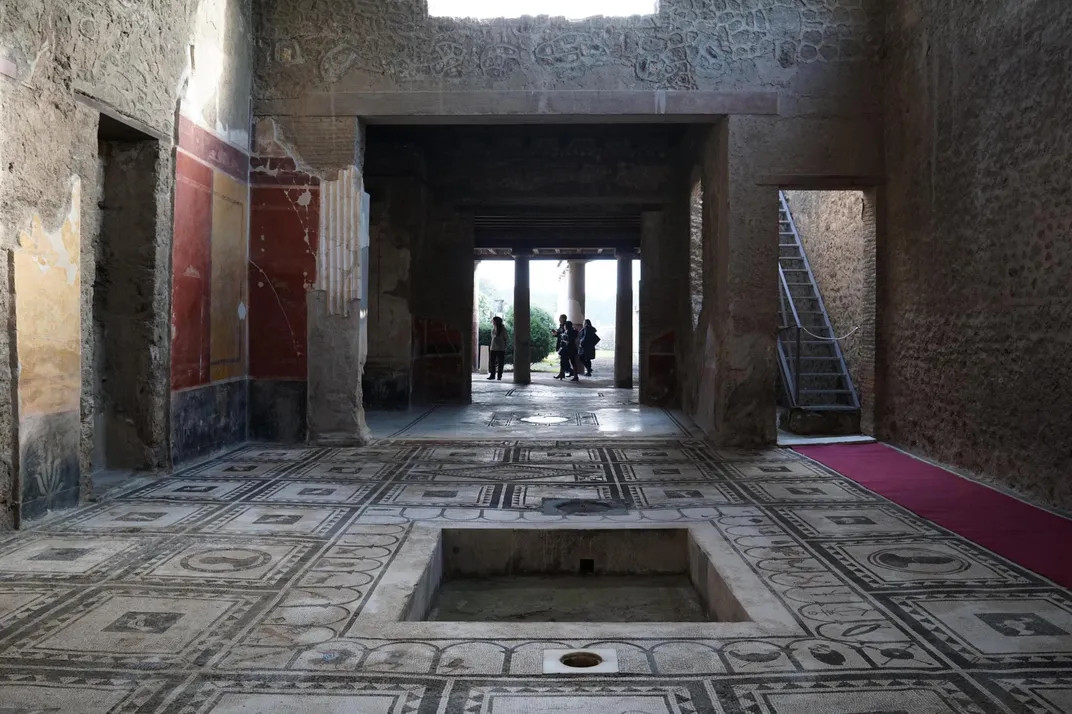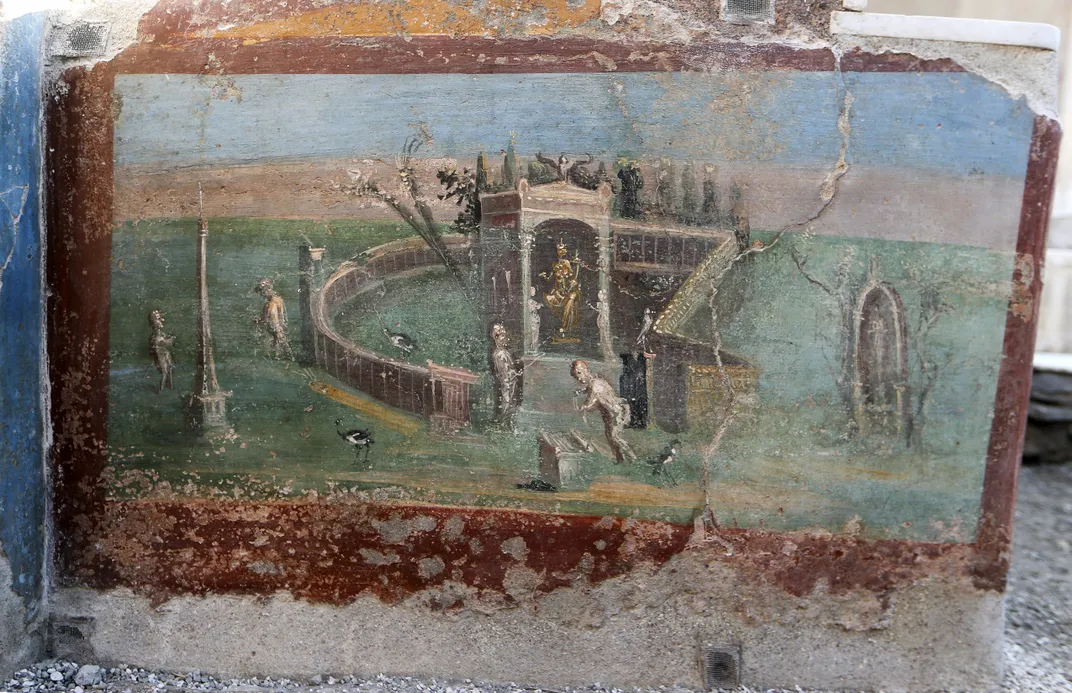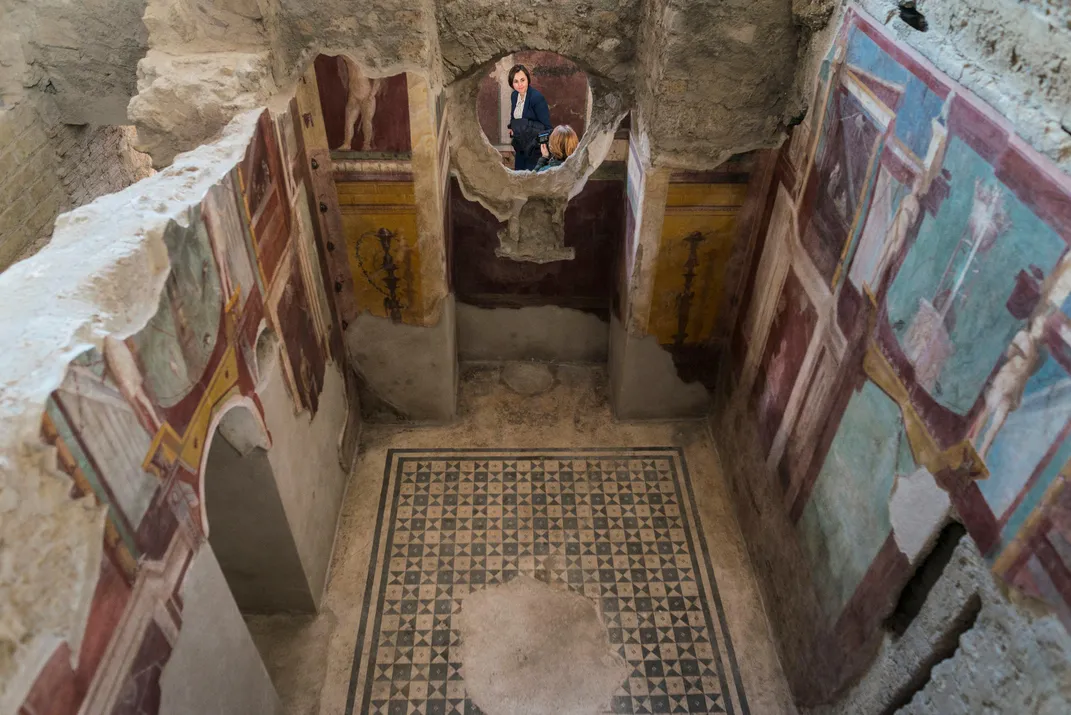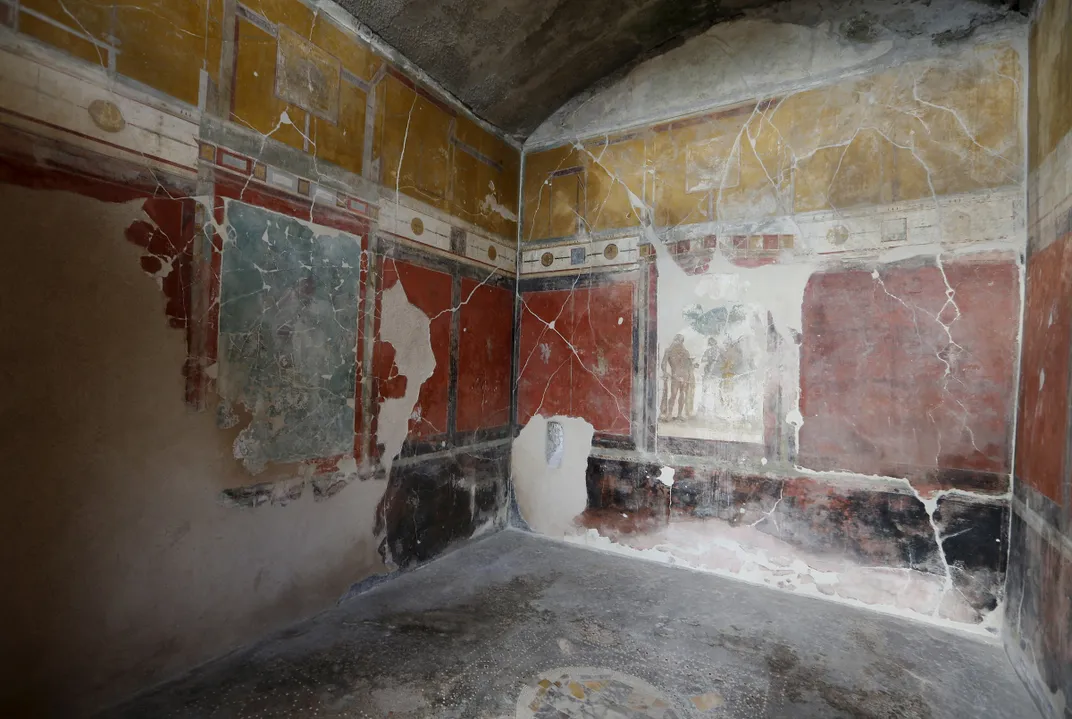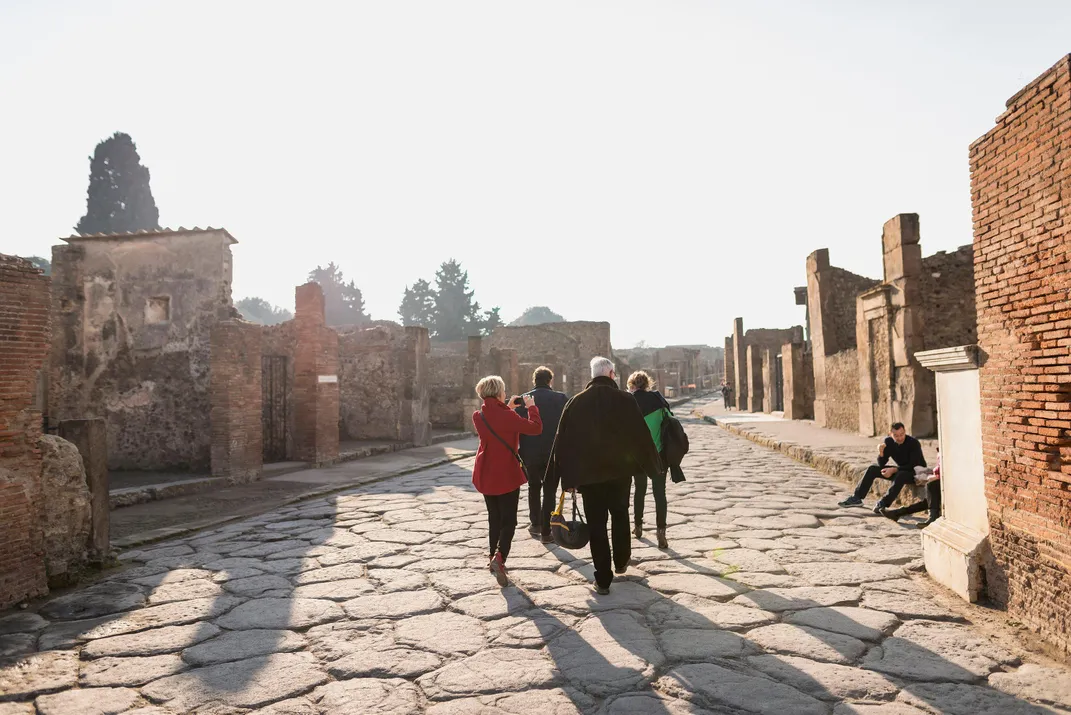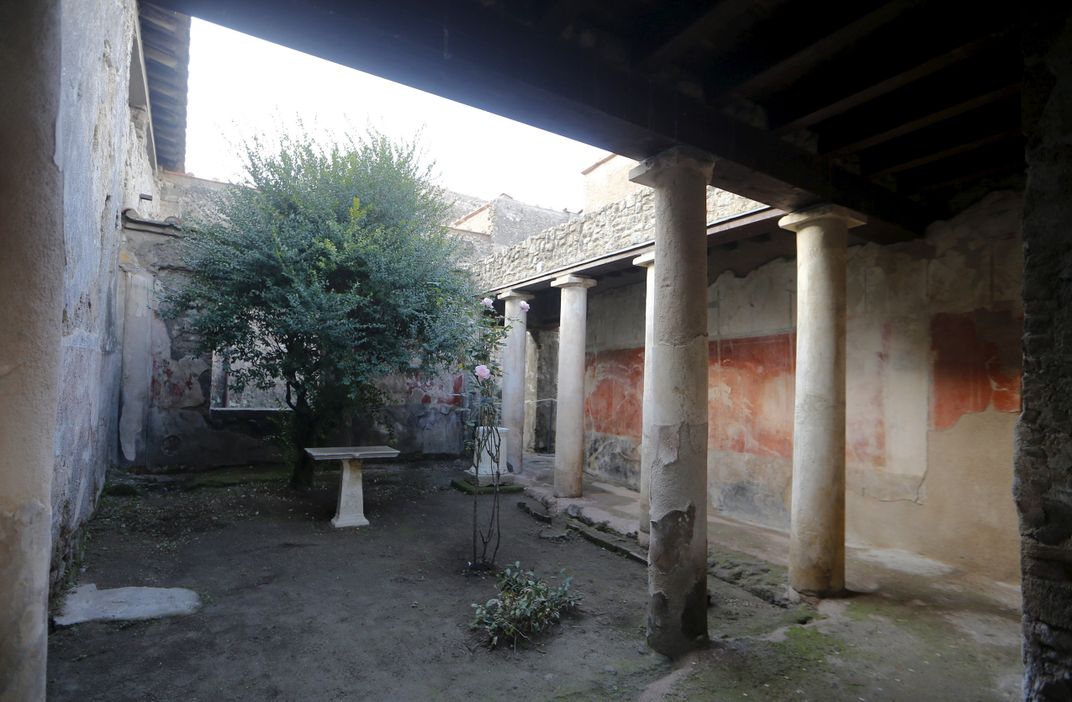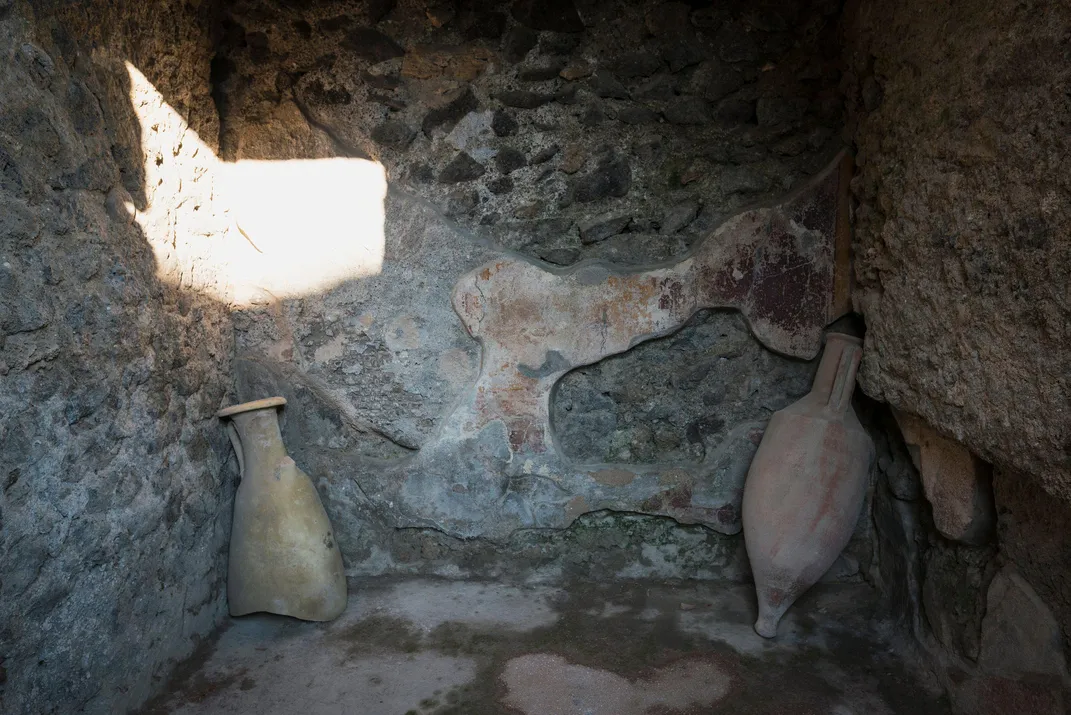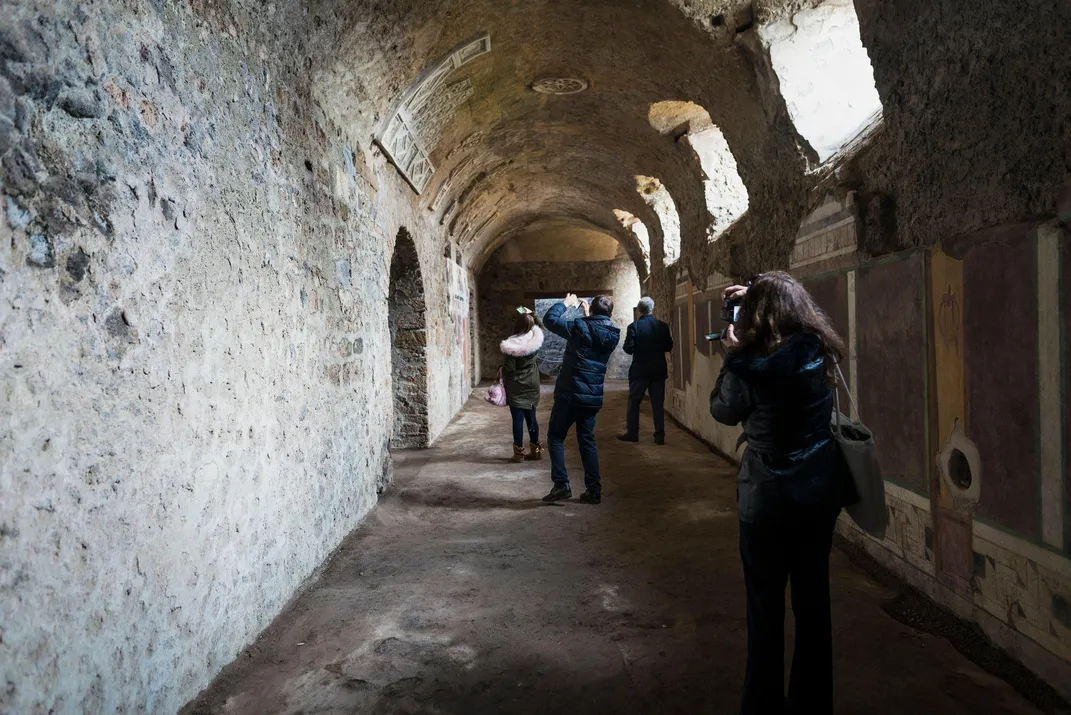Ancient Pompeii Is Alive Again as Italian Officials Unveil Six Restored Ruins
The “Grand Pompeii Project” helps to preserve the dwellings
The residents of the ancient city of Pompeii perished when the “mountain” in whose shadow they lived beneath roared into life as a volcano in 79 A.D. Mount Vesuvius’ eruption cloaked the town in a deep blanket of choking ash that preserved the homes, belongings and bodies of its citizens for future generations. In modern times, Pompeii has come under a more contemporary threat: the mundane wear of time and weather, reports AAP, an Australian news service.
The “Grand Pompeii Project,” was created to preserve Pompeii's “intricate mosaic tiles, bathhouses and even graffiti.” As part of the initiative, six newly restored villas reopened to the public last week, reports Jareen Imam for CNN. The villas offer a peek into the past at the Unesco World Heritage site. The newly restored sites include a merchant's lavish house, a thermal bathing structure and a business that sold fabric. One of the most buzzed-about restorations is a specially designed laundry house called the Fullonica di Stephanus.
In recent years, labor disputes, corrupt management and funding issues have plagued the project, drawing criticism, reports Joshua Hammer for Smithsonian:
A 2011 Unesco report about the problems cited everything from “inappropriate restoration methods and a general lack of qualified staff” to an inefficient drainage system that “gradually degrades both the structural condition of the buildings as well as their decor.” Pompeii has also been plagued by mismanagement and corruption. The grounds are littered with ungainly construction projects that squandered millions of euros but were never completed or used. In 2012, [conservationist Antonio] Irlando discovered that an emergency fund set up by the Italian government in 2008 to shore up ancient buildings was instead spent on inflated construction contracts, lights, dressing rooms, a sound system and a stage at Pompeii’s ancient theater. Rather than creating a state-of-the-art concert venue, as officials claimed, the work actually harmed the historic integrity of the site.
At one point, Unesco even threatened to list the site as one “at risk of destruction” reports the AAP. After the House of Gladiators collapsed under heavy rain in 2010, the European Union stepped in and invested $105 million euros (about $142 million at the time) for renovations. Since the project has come under new mangement, Pompeii has made “excellent progress,” according to an Unesco inspector's March 2015 report.
With the first public display of the workers efforts, the tone has now shifted to one of optimism. “We made news with the collapses, now we are making news with restoration,” said Italian Prime Minister Matteo Renzi during the unveiling last week, reports the Associated Press.
“These are houses of extraordinary importance, because they show a very original and particular cross section of life during ancient Pompeii," Antonio Irlando, president of Cultural Heritage Observer, tells the Associated Press.
Pompeii’s appeal has always been the remarkably clear window it provides into the daily lives of people from about 2,000 years ago. Walking amid the dwellings can make that connection even clearer. "Pompeii is a city, but a city of ruins. And ruins are doomed to crumble,” says Pompeii superintendent Massimo Ossana, the AAP reports. “Our job is to keep alive a dead city.”
